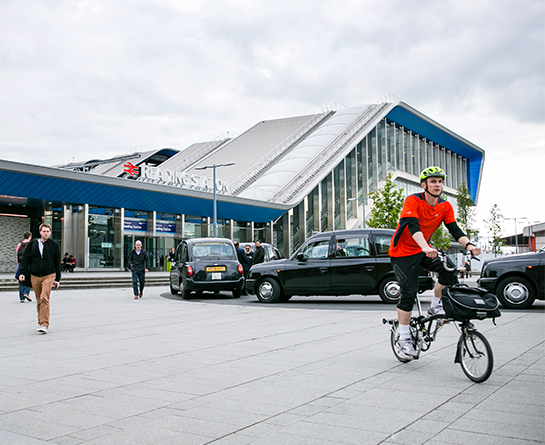Inclusive access to transport
Access to transport can transform the lives of people with physical, sensory and cognitive impairments, improving employment opportunities, access to health care, education and overall quality of life. TRL was commissioned to produce a set of guidelines for practitioners, to improve access to transport and reduce mobility barriers in developing countries. Cultural and environmental factors in different countries influence the choice of mobility solutions, but people’s basic needs are similar: our approach incorporated design, technical, policy and practical issues.
Safe cycle access
In 2013, there were 109 UK cycling fatalities and 3401 cyclists seriously injured. There was a clear correlation between the increase in cyclists on the road and the increase in accidents. We collaborated with Transport for London (TfL) to investigate innovative types of cycle infrastructure, such as Dutch-style roundabouts. The trial results informed TfL’s London Cycle Design Standards, making London a safer, more accessible place to cycle.
Healthy mobility
Healthy mobility is important in the UK’s future transport. Our studies have examined innovative active travel modes such as hoverboards, powered wheelchairs and Segway scooters, and ways to measure their health benefits. Active travel promotes healthier lifestyles and benefits the environment. But it also creates a need for updated government legislation and regulation for these new modes of transport. TRL’s research recommends a ‘mobility by design’ approach. This means transport planners and local authorities plan around the movement of people, rather than around existing infrastructure.
Transport and mental health
We’ve explored the impact of mental illnesses, including stress and anxiety, on passengers’ transport usage. As a result, we’re raising awareness of mental health considerations for transport operations and city planners. We’re building links with mental health organisations, academics and trade bodies, who have pledged to collaborate on future transport developments.
Safer buses
TRL led the research behind TfL’s Bus Safety Standard, supporting their vision for zero fatalities involving London buses by 2030. This work empowers TfL to evaluate a range of measures that could improve bus safety. Improved driver visibility, passenger protection and front end design form part of the new standard: it will reduce the number of collisions involving other road users, and reduce the number and severity of injuries to both pedestrians and passengers.
Innovative personal transport
We are partners in projects trialing automated personal mobility solutions, including Streetwise, ServCity and DRIVENbyAI. They aim to replace commuter cars with automated ride-sharing services. TRL is developing safety validation methods to test and confirm the performance of these vehicles, to make sure they operate safely and accurately on UK roads in every conceivable situation.
Meeting future urban transport demand
The UK’s population of 66 million is forecast to rise to an estimated 73 million by 2041. To meet increased demand, our sustainable transport experts have been evaluating new modes of transportation such as Hyperloop (for passengers) and Magway (for goods), where pods are propelled at high speeds within a tube. They could connect cities and urban areas better, so more people and goods could travel longer distances in a shorter time.

